


Important management factors should be considered during the growth of the rice crop. These include planting method, water, fertilizer, weeds, pests and diseases, and harvesting.

Planting the crop on time will help to produce a fast-growing, uniform crop that will have higher yields and will be better able to compete with weeds and pests. The best time of planting depends on the locality, variety, water availability, labour and the last harvested time. Rice can either be transplanted from a nursery or direct-seeded in the field with dry and wet seeding methods. Transplanted crops normally take less time in the production field but 10–15 days longer for the total crop duration. In both cases, a well prepared seedbed is needed.

Apply and incorporate basal fertilizer before the last ploughing or at 10 days after establishment.
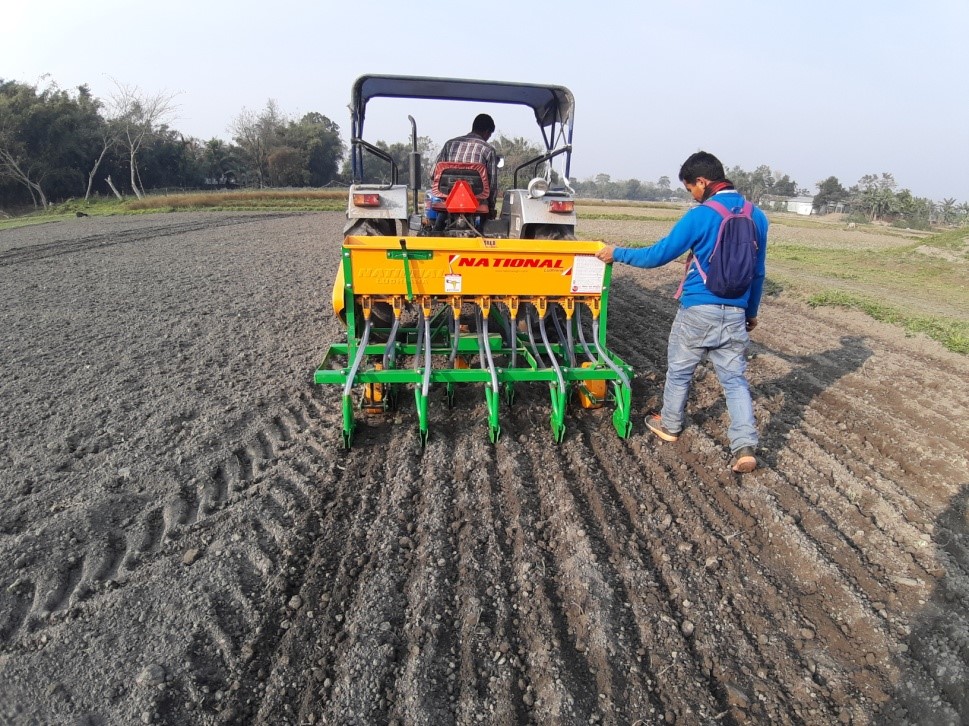

Most soils provide only limited amount of nutrients to the crops, therefore fertilizers need to be applied to compensate the crop nutrient requirement and for increasing the increase grain yield. In some cases, fertilizers are also added to improve the soil’s physical condition specially, the organic fertilisers. The amount and type of fertilizer applied are determined on the assumption that 1 ton of grain will remove 15 kg nitrogen (N), 2–3 kg phosphorus (P), and 15–20 kg potassium (K). These base rates need to be modified according to the soil type, the cropping season, the variety, ecology, the crop condition and prevailing weather conditions, and efficiency of nutrient application. Steps for efficient fertilizer-use are:
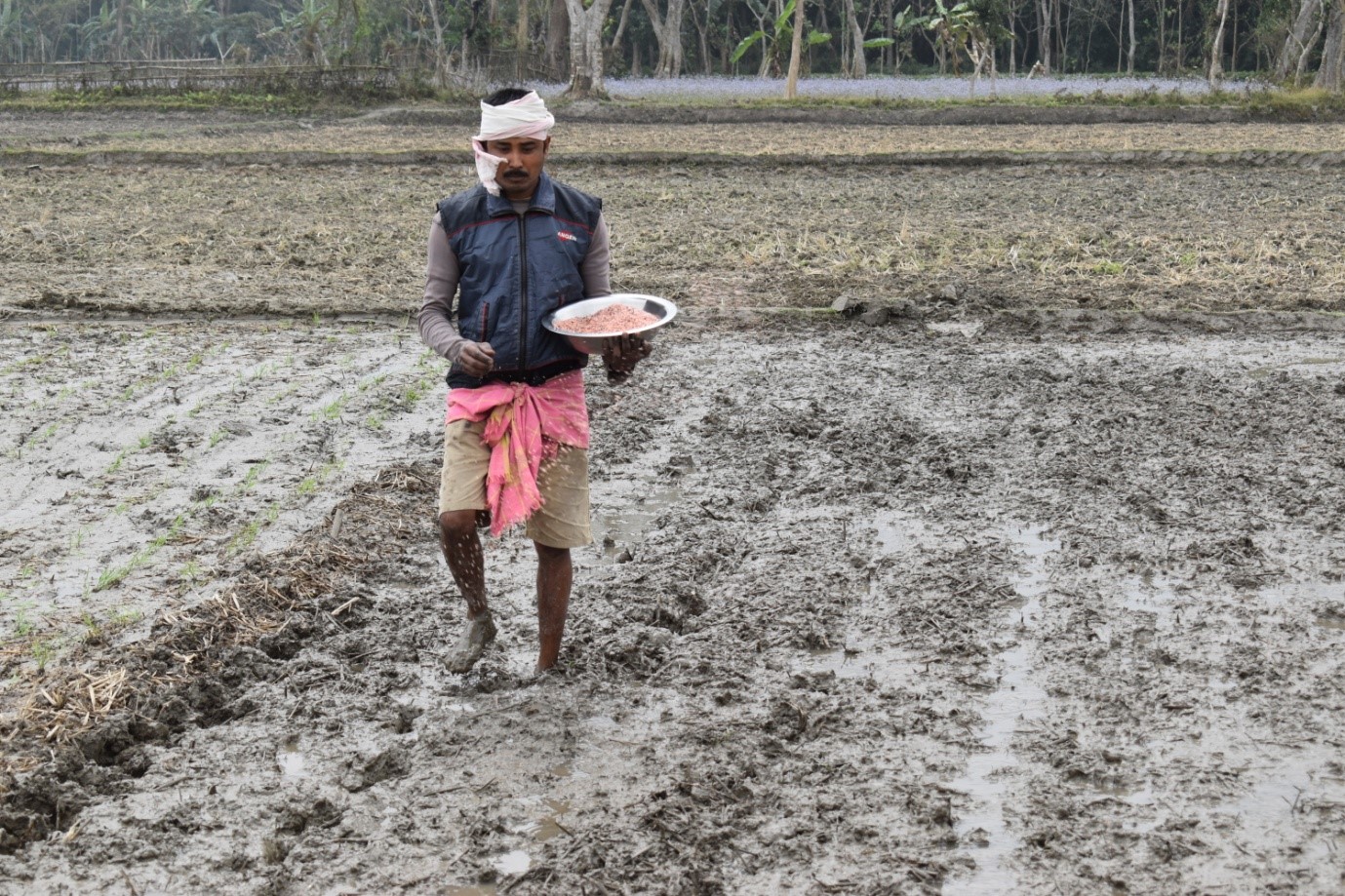

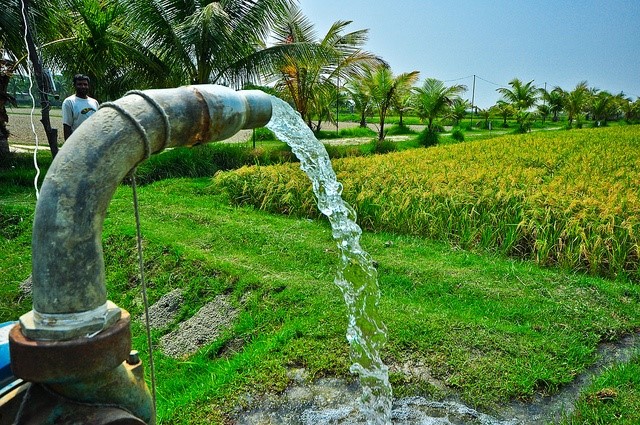
On average, it takes 1,432 litres of water to produce 1 kg of rice in an irrigated lowland production system. Total seasonal water input to rice fields varies from as little as 400 mm in heavy clay soils with shallow groundwater tables to more than 2000 mm in coarse-textured (sandy or loamy) soils with deep groundwater tables.
Around 1300-1500 mm is a typical amount of water needed for irrigated rice in Asia. Irrigated rice receives an estimated 34−43% of the total world’s irrigation water, or about 24−30% of the entire world’s developed fresh water resources.
To effectively and efficiently use water and maximize rice yields, the following good water management practices can be followed:
In some canal irrigation systems, the period of time between land soaking for land preparation and planting can be up to 40 days. To minimize time between operations:
Different crop establishment methods require different water management practices
Alternate Wetting and Drying (AWD) can be started a few weeks (1-2) after transplanting. Irrigate and then allow the water depth to drop to 15 cm below the surface using a field water tube (pictured to the right) to monitor the water level depth. Once the water level has dropped to 15 cm below the surface, re-flood the field to a depth of 5 cm above the surface and repeat. From one week before to one week after flowering, the field should remain flooded. After flowering, during grain filling and ripening, the water level can drop to 15 cm below the surface before re-flooding.
When the quantity of weeds is more, AWD should be postponed for 2-3 weeks to assist suppression of weeds by ponded water, and to improve the efficacy of herbicide.

Weeds compete directly with the rice plants and reduce rice yield. Presence of each 1 kg dry matter of weeds is equivalent to 1 kg grain loss. Weeds cause maximum yield loss within the first 20-50 days after crop establishment. Weeding after panicle initiation may also be important to prevent shedding of weed seeds for future crops.
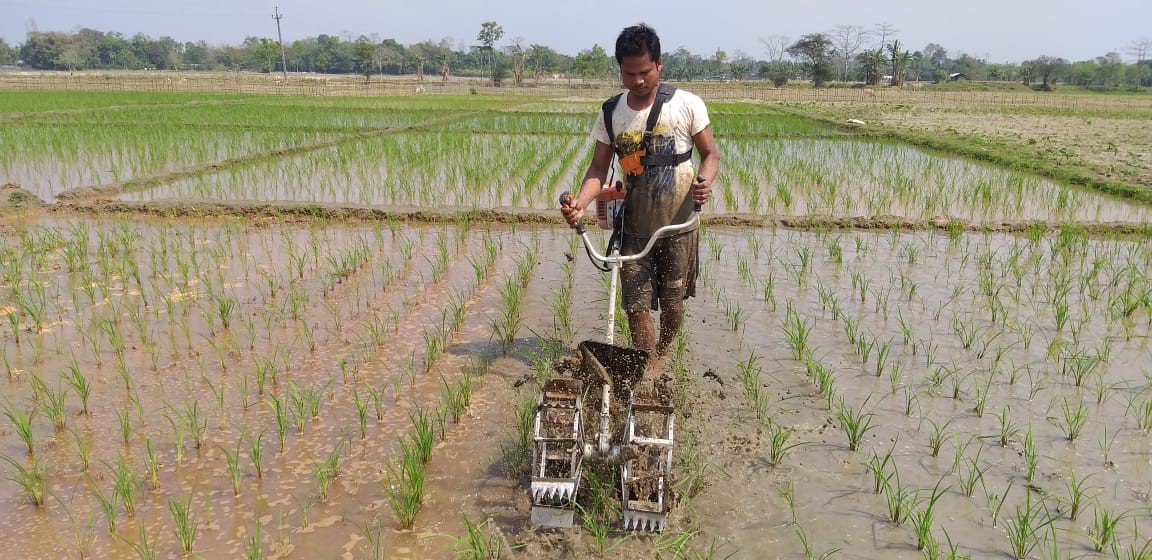
Direct control of weeds can be done through (1) manual weeding by hand and (2) mechanical weeding using implements such as push weeder and inter-row cultivation weeders.
ManualManual weeding by hand is an efficient method for weed control. However, this is labour-intensive and is not practical for large areas.
When to hand weed:Handweeding of young weeds at the two-leaf to three-leaf growth stages is extremely difficult. To effectively hand weed:
Mechanical weeding is most appropriate for crops transplanted in straight rows. This method requires less time and laboras compared to manual weeding.

The major insect pests of rice crop include rice hispa, yellow stem borer, rice bug, brown plant hopper, leaf folders, caseworm, rice gundhi bug, gall midge and thrips. Rice hispa is abundant during Sali and Ahu seasons than in Boro. The incidence of brown plant hopper is relatively greater in the Boro season. The rice bug is a major problem in ahu season, particularly in the early ahu crop. Caseworm is a localised pest and occurs more in the Sali season. Many diseases infest rice plants in Assam, but the most important ones are sheath blight, bacterial blight and blast in Sali, blast and sheath rot in Ahu, and sheath rot and sheath blight in Boro. It is assumed that 15-20 % yield losses may occur in pest infested fields of rice. Although several cultural, mechanical, chemical and biological management practices are available for controlling insect pests and diseases, it is not known what percentage of the farmers use these technologies. One of the sustainable approaches to manage pest and diseases in the fields is to use the Integrated Pest management (IPM) approach.

IPM integrates preventive and corrective measures to keep pests at a level from causing significant damage, with minimum risk or hazard to human and desirable components of the environment. IPM programs have proven track record of significantly reducing the risks related to pesticides, while improving quality, health & welfare of environment with increased productivity and reduced pest damage.
To limit pest and disease incidences in a rice crop, the following recommendations can be adopted.
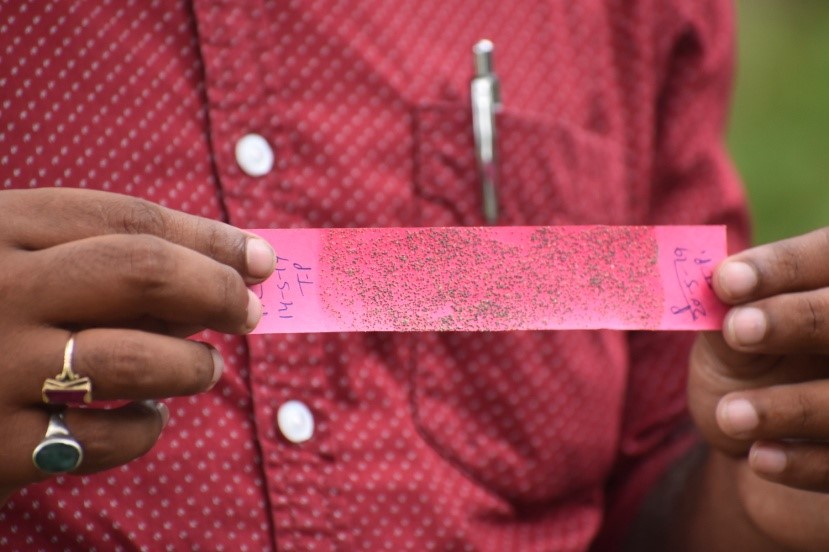
When deciding to use a chemical for pest and disease control, it is important to:
Jorhat, PIN - 785013 Assam